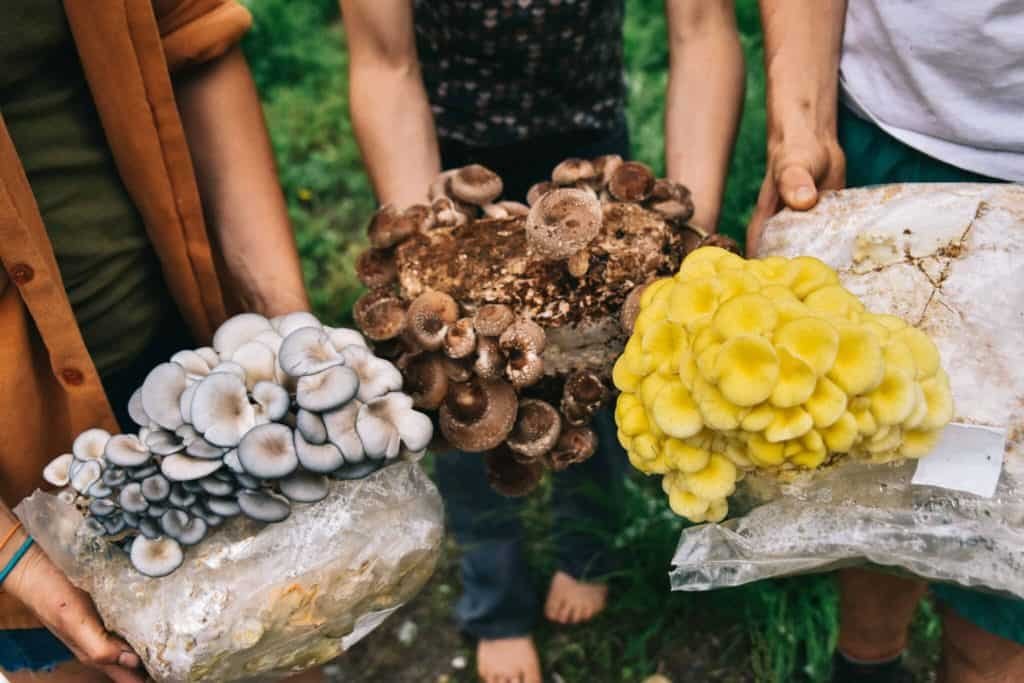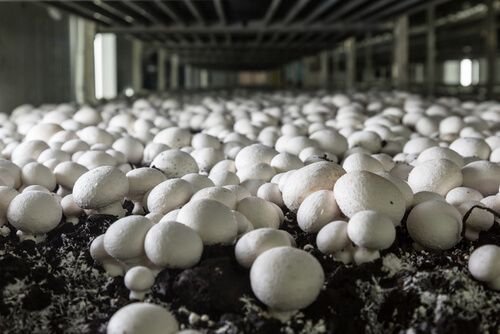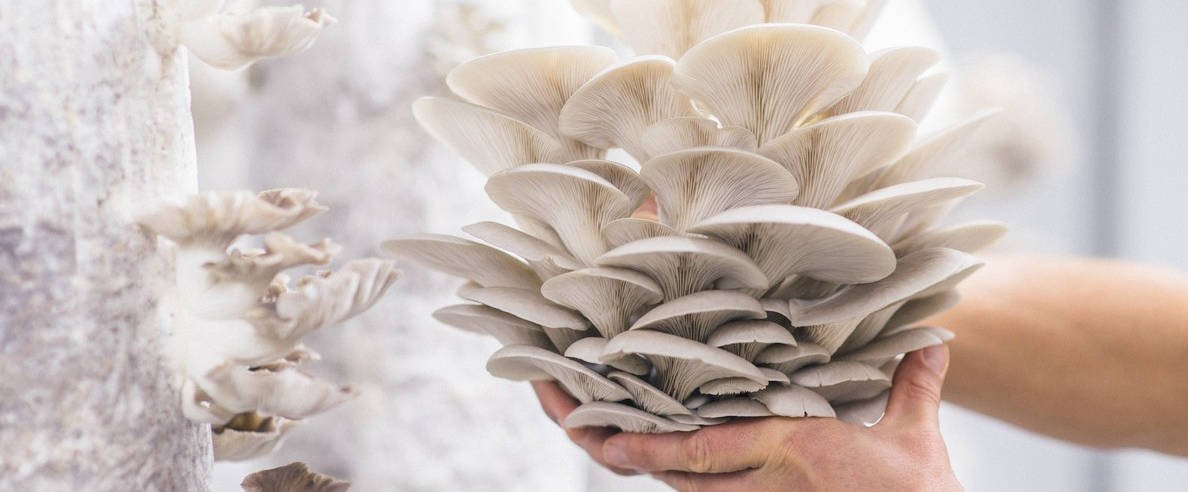How to Start a Mushroom Farm? Begin your mushroom farm by selecting a suitable growing space with controlled temperature and humidity, obtaining high-quality mushroom spawn or spores, preparing a substrate such as compost or sawdust, inoculating the substrate with the spawn, and providing proper ventilation and lighting to facilitate mushroom growth, leading to a successful harvest.
Unleashing the Magic of Mushrooms: A Step-by-Step Guide to Starting Your Own Farm
Mushrooms are a fascinating and diverse group of organisms that have been used for centuries in various cultures for their culinary and medicinal properties. They come in a wide range of shapes, sizes, and colors, and can be found in almost every corner of the world. From the common button mushroom to the exotic shiitake and oyster mushrooms, there is a mushroom variety to suit every taste.
In recent years, there has been a growing interest in mushroom cultivation as people become more aware of the health benefits and environmental advantages of growing their own food. Mushroom cultivation can be done on a small scale in your own backyard or even indoors, making it accessible to people with limited space.
Understanding the Benefits of Growing Your Own Mushrooms
Consuming mushrooms has numerous health benefits. They are low in calories and fat, but high in fiber, vitamins, and minerals. Mushrooms are also a good source of antioxidants, which help protect the body against free radicals and reduce the risk of chronic diseases such as heart disease and cancer. Additionally, mushrooms are rich in beta-glucans, a type of soluble fiber that has been shown to boost the immune system and improve gut health.
Growing your own mushrooms can also be cost-effective. While store-bought mushrooms can be quite expensive, especially if you prefer organic varieties, growing your own can save you money in the long run. The initial investment in equipment and materials may seem high, but once you have set up your mushroom farm, you can continue to harvest mushrooms for years to come.
Furthermore, mushroom cultivation is environmentally friendly. Unlike traditional agriculture, which requires large amounts of water, pesticides, and fertilizers, mushroom cultivation is relatively low-impact. Mushrooms can be grown using organic waste materials such as straw or sawdust, reducing the amount of waste that goes into landfills. Additionally, mushrooms are excellent at breaking down organic matter and can help improve soil health.
Choosing the Right Type of Mushrooms to Grow
When it comes to choosing the right type of mushrooms to grow, there are several factors to consider. Some popular varieties for cultivation include button mushrooms, shiitake mushrooms, oyster mushrooms, and lion’s mane mushrooms. Each variety has its own unique flavor profile and growing requirements.
It is important to consider the climate and growing conditions in your area when choosing a mushroom variety. Some mushrooms prefer cooler temperatures, while others thrive in warmer climates. Additionally, certain varieties may require specific substrates or growing mediums. For example, oyster mushrooms can be grown on a wide range of substrates, including straw, sawdust, and coffee grounds, making them a versatile choice for beginners.
| Mushroom Species | Difficulty | Growing Conditions | Time to Fruiting | Market Potential |
|---|---|---|---|---|
| Oyster Mushrooms (Pleurotus spp.) | Easy | Wide temperature range, various substrates (straw, sawdust, etc.) | Fast (2-4 weeks) | High demand, versatile culinary mushroom |
| White Button Mushrooms (Agaricus bisporus) | Moderate | Requires specific compost substrate, controlled climate | Moderate (4-6 weeks) | Most common commercially grown, familiar to consumers |
| Shiitake Mushrooms (Lentinula edodes) | Moderate | Prefers hardwood logs, cooler temperatures | Slow (6-12 months on logs) | High value, gourmet, sought after for flavor and health properties |
| Lion’s Mane (Hericium erinaceus) | Moderate | Grows on sawdust blocks, prefers cooler temperatures | Moderate (4-6 weeks) | Unique appearance, culinary and potential medicinal uses |
| Wine Cap (Stropharia rugosoannulata) | Easy | Can be grown outdoors in woodchip beds | Moderate (depends on outdoor conditions) | Good flavor, potential for niche markets |
Setting Up Your Mushroom Farm: Equipment and Materials Needed
Setting up a mushroom farm requires some basic equipment and materials. The most essential equipment includes a growing container or bag, a sterilization unit such as a pressure cooker or autoclave, and a humidity and temperature control system. You will also need a source of clean water and a substrate for the mushrooms to grow on.
The substrate is the material that provides nutrients for the mushrooms to grow. It can be made from a variety of organic materials such as straw, sawdust, or wood chips. The substrate needs to be prepared properly to ensure that it is free from contaminants and provides an optimal environment for mushroom growth.
Preparing the Growing Substrate: From Straw to Sawdust
Different types of mushrooms require different substrates and preparation methods. For example, button mushrooms are typically grown on composted manure or a mixture of straw and horse manure. Shiitake mushrooms, on the other hand, prefer hardwood sawdust supplemented with wheat bran or rice bran.
Preparing the substrate involves sterilizing it to kill any competing organisms that could contaminate the mushroom culture. This can be done using a pressure cooker or autoclave, which heats the substrate to high temperatures for a specific period of time. After sterilization, the substrate needs to be cooled down before inoculating it with mushroom spawn.
Inoculating the Substrate: Spawning Your Mushrooms
Inoculating the substrate involves introducing mushroom spawn, which is essentially a culture of mushroom mycelium, into the prepared substrate. The mycelium is the vegetative part of the fungus and is responsible for breaking down organic matter and absorbing nutrients.
There are several methods of inoculation, including grain spawn, sawdust spawn, and liquid culture. Grain spawn involves growing mycelium on a grain substrate such as rye or millet, which is then mixed with the prepared substrate. Sawdust spawn is made by mixing sawdust with mycelium and allowing it to colonize before adding it to the substrate. Liquid culture involves growing mycelium in a liquid medium and then injecting it into the substrate.
Caring for Your Mushrooms: Temperature, Humidity, and Light Requirements
Mushrooms have specific temperature, humidity, and light requirements for optimal growth. Most mushrooms prefer temperatures between 55°F and 75°F (13°C and 24°C), although some varieties can tolerate higher or lower temperatures. It is important to maintain a consistent temperature throughout the growing process to ensure successful mushroom cultivation.
Humidity is also crucial for mushroom growth as it helps prevent drying out and promotes the development of fruiting bodies. The ideal humidity level for most mushrooms is around 90%, although this can vary depending on the variety. A humidifier or misting system can be used to maintain high humidity levels in the growing area.
Light requirements vary among different mushroom varieties. Some mushrooms prefer indirect light or low light conditions, while others require more light to initiate fruiting. It is important to research the specific light requirements of the mushroom variety you are growing and provide the appropriate lighting conditions.
Dealing with Common Mushroom Farming Challenges: Contamination, Pests, and Diseases
Like any form of agriculture, mushroom cultivation comes with its own set of challenges. Contamination is one of the most common problems encountered in mushroom farming. Contamination can occur during substrate preparation, inoculation, or fruiting, and can be caused by bacteria, molds, or other fungi. Proper sterilization techniques and maintaining a clean growing environment can help prevent contamination.
Pests can also be a problem in mushroom farming. Common pests include flies, mites, and slugs, which can damage the mushrooms or compete with them for nutrients. Regular monitoring and implementing pest control measures such as sticky traps or natural predators can help keep pests at bay.
Diseases can also affect mushroom crops. Some common diseases include bacterial blotch, green mold, and cobweb mold. These diseases can be caused by poor sanitation practices or environmental conditions. Proper hygiene and maintaining optimal growing conditions can help prevent the spread of diseases.
Harvesting Your Mushrooms: When and How to Pick Them
Knowing when to harvest your mushrooms is crucial for getting the best flavor and texture. Different mushroom varieties have different signs that indicate they are ready for harvest. For example, button mushrooms are typically harvested when the caps are fully expanded but before the gills start to darken. Shiitake mushrooms are harvested when the caps are still slightly closed but have started to flatten out.
To harvest mushrooms, gently twist or cut them at the base of the stem. Avoid pulling on the mushrooms as this can damage the mycelium and reduce future yields. It is best to harvest mushrooms when they are still young and firm for optimal flavor and texture.
Storing and Preserving Your Mushrooms: Drying, Freezing, and Canning
If you have a surplus of mushrooms, you can preserve them for future use. There are several methods of preserving mushrooms, including drying, freezing, and canning.
Drying is one of the oldest and simplest methods of preserving mushrooms. To dry mushrooms, slice them thinly and spread them out on a drying rack or baking sheet. Place the rack or sheet in a well-ventilated area or use a food dehydrator to speed up the drying process. Once the mushrooms are completely dry, store them in an airtight container.
Freezing is another popular method of preserving mushrooms. To freeze mushrooms, clean and slice them before blanching them in boiling water for a few minutes. Drain the mushrooms and spread them out on a baking sheet to cool. Once cooled, transfer the mushrooms to freezer bags or containers and store them in the freezer.
Canning is a more involved method of preserving mushrooms but can result in longer shelf life. To can mushrooms, clean and slice them before blanching them in boiling water for a few minutes. Pack the mushrooms into sterilized jars and cover them with boiling water or broth. Process the jars in a pressure canner according to the manufacturer’s instructions.
The Joy of Growing and Eating Your Own Mushrooms
Growing your own mushrooms can be a rewarding and fulfilling experience. Not only do you get to enjoy the delicious flavors and textures of homegrown mushrooms, but you also have the satisfaction of knowing exactly where your food comes from and how it was grown.
In addition to the joy of growing your own food, consuming homegrown mushrooms has numerous health benefits. They are packed with nutrients, low in calories, and have been shown to boost the immune system and improve gut health.
So why not give mushroom cultivation a try? With some basic equipment, materials, and a little bit of patience, you can start growing your own mushrooms and enjoy the many benefits they have to offer. Happy mushroom farming!
Originally posted 2024-03-17 07:10:06.





